

Fellowship Program

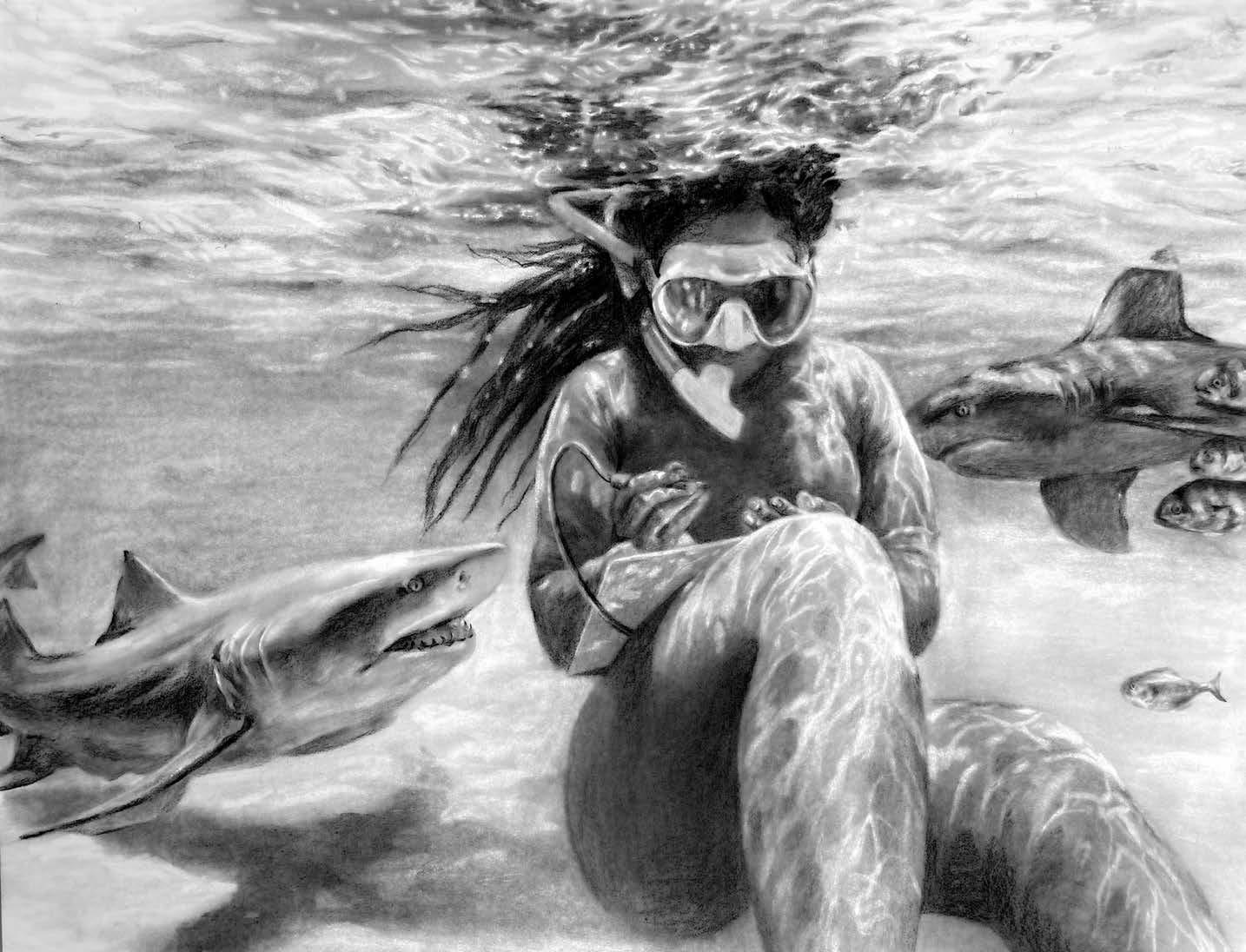
A Year In Review
A Letter to our Readers
Youngpeoplearedrivingchangeinincredibleandmeaningfulways.
AtBowSeatwearethrilledtosupportyoutheffortsthatcreatively addressenvironmentalchallenges.Facilitatingyouth-for-youthinitiatives is a significant way to create safe and supportive youth communities, and alsoawaytoprovidevaluablerealworld,skill-buildingexperiencetoyoung peoplearoundtheglobe.
In 2023 our Future Blue Youth Council supported 11 worthy youth-led Fellowship projects. In this report you will learn about these different projects, theirimpactandthepowerandpromiseofyouthleadership.
 LindaCabot,Founder&PresidentofBowSeat
LindaCabot,Founder&PresidentofBowSeat


About
The Fellowship Grant Program is an initiative of the Future Blue Youth Council (FBYC), a group of young leaders sponsored by Bow Seat Ocean Awareness Programs (Bow Seat) who work to empower their peers to advocate for their future and for our environment. The Fellowship provides funding and mentorship to young people who lead projects that address environmental challenges in their communities with a creative arts lens.
The goals of the Fellowship are to educate the public about an environmental problem, engage others in activities that address the environmental issue, and integrate the creative arts and environmental conservation.

Fellows receive grant money, access to a community of other grantees, and ongoing peer-to-peer mentorship and support from the Future Blue Youth Council.
Impacts
$21,365 awarded
11 grants distributed (6 from LMIC or “majority world”)
7 countries represented
At least 12,500 people reached through the Fellows’ projects
Let's Talk About Menstruation
Normalizing Conversations About Periods in Nepal

Fellow: Bishal Panthi Country: Nepal
Let’s Talk About Menstruation aimed at addressing socio-cultural challenges faced by women, particularly in rural areas, during menstruation. Through educational awareness sessions, workshops, training on crafting biodegradable sanitary napkins, and an extensive awareness campaign, they were able to reach over 10 schools, positively impacting more than 1,000 individuals in remote regions.
Bishal and his team were nominated for the 2023 Citizen Entrepreneurship Competition, and emerged as global finalists for the Youth Wellbeing Prize 2023!
What did you learn?
“Participating in the Fellowship Grant Program was a profound learning experience for me. Firstly, I gained insights into the realms of social service and humanity. The impact of educating people in rural areas about menstrual health hygiene and witnessing the transformative changes had a profound effect on my personality and professional aspirations.
How did you incorporate creative arts?
What did you like?
“Mentorship and Guidance throughout the entire project have been an important factor of the success of our project, and I truly liked those impactful weekly meetings I had with the members of the FBYC.”
“Creative arts played a key role in our project. Posters distributed highlighted sociocultural issues during menstruation and the environmental impact of conventional sanitary napkins. We organized a student art competition for menstrual health hygiene awareness, and crafting bio-degradable sanitary napkins required artistic skills conveyed by our facilitators. Incorporating creative arts enhanced the impact and outreach of our initiatives.”
Mudzi Cooking Project
Fellow: Maria KametaCountry: Malawi
Every day, women surrounding the Chisinga Forest spend time procuring firewood to run their homes and feed their families. In search for an alternative to the exploitative practices of deforestation, Maria decided to create a new form of energy using what the villages already had in stock. Maria trained 28 youth and 32 women in the surrounding villages to create briquettes to be used with energy-efficient cookstoves. Her team also trained 30 youth and 27 women in stove construction. This resulted in the construction of 360 stoves for 360 households, supporting over 1,800 individuals. During the project, Maria purchased 2 briquette making machines allowing the community to produce over 100,000 briquettes. She also mentored 50 youth climate change ambassadors who educated over 4,000 people.
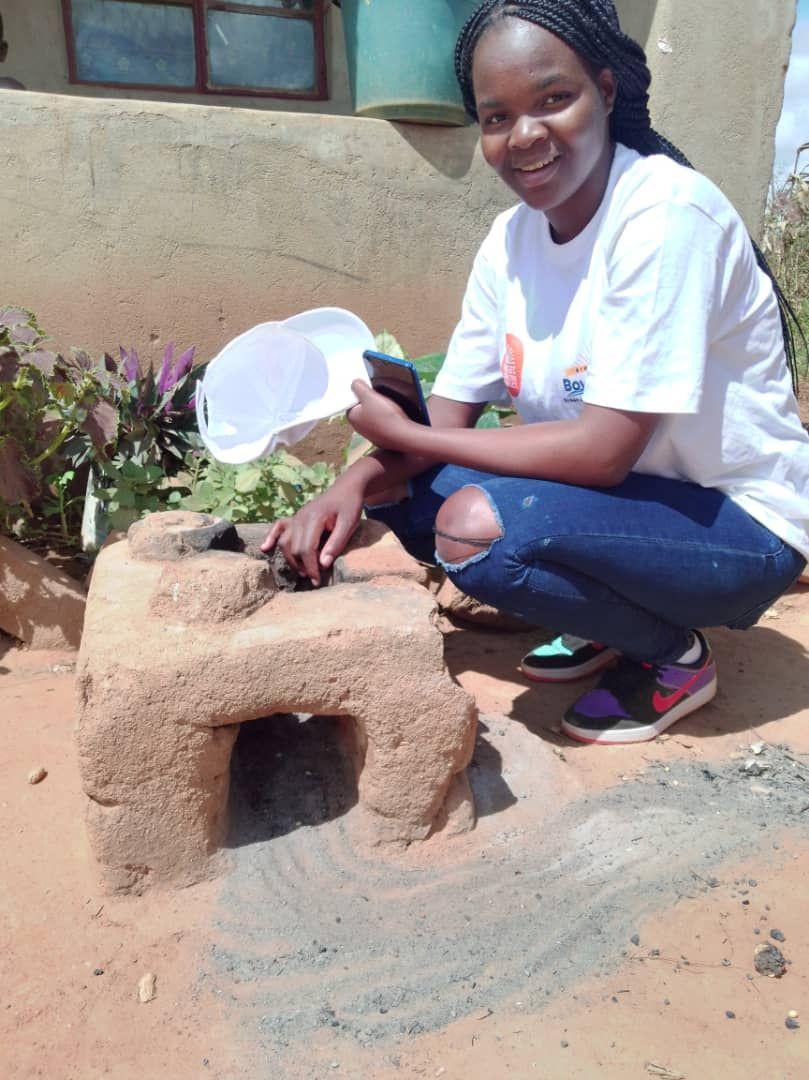
The Mudzi Cooking Project also helped communities plant 2,300 tree seedlings, develop a community credit facility from income generated by the briquettes, and organize clean up activities

What did you learn?
“Through the Fellowship Grant Program, I learned communication skills and increased my knowledge about community development and project management. A moment that stood out to me was when the women who were making briquettes started a community credit scheme through the income they generated. In the future, I will add more stoves and encourage afforestation activities.”
How did you incorporate the creative arts?
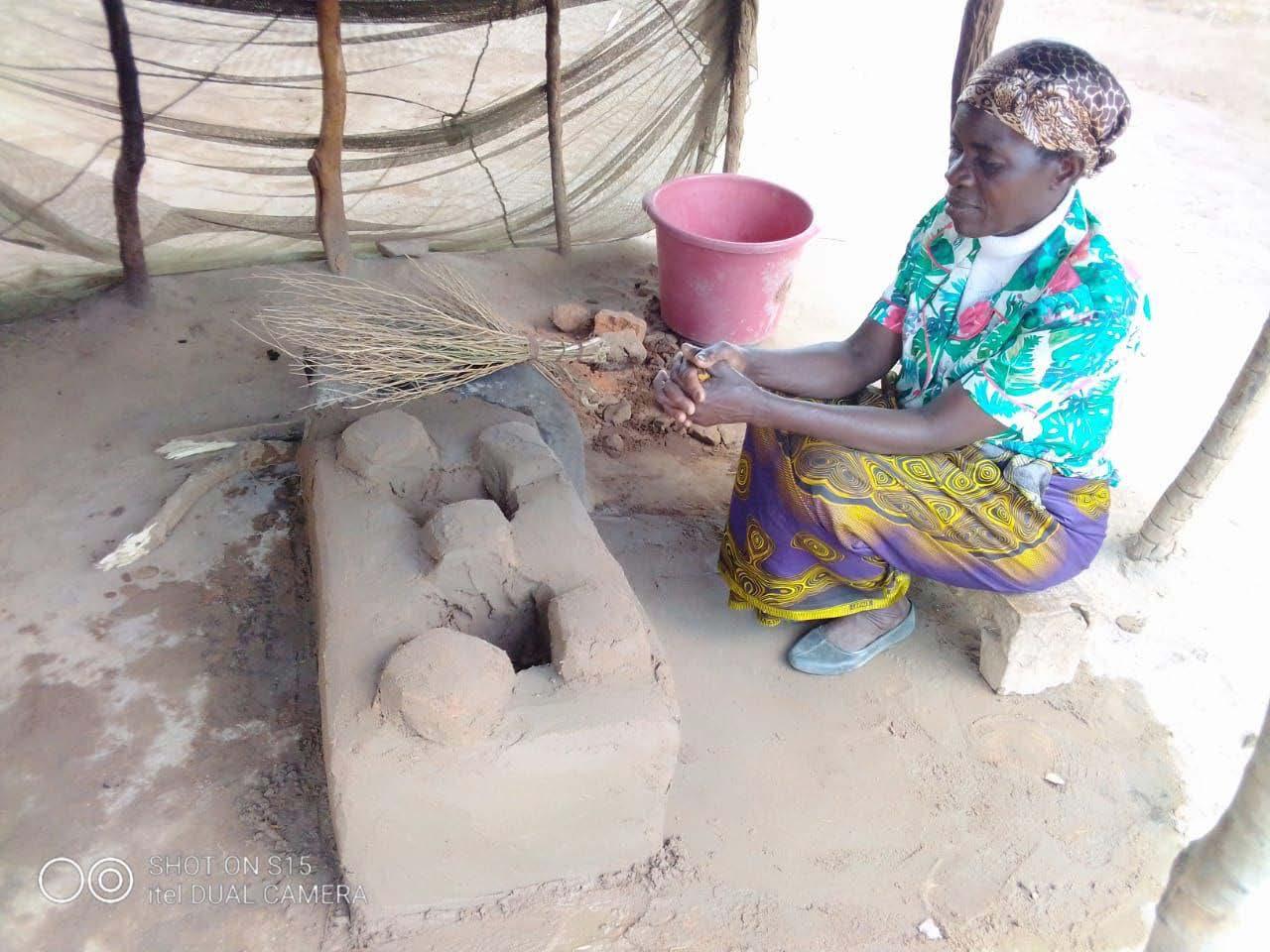
“We developed artwork about climate change. Students were educated about climate change, and then they produced artwork on several topics including: climate science; impacts of climate change on gender, education, health, agriculture, and energy; individual resolutions on climate change; and community involvement in solving climate change. The artwork was used during awareness campaigns and displayed in schools. Additionaly, we used drama, dance, and poetry to raise awareness.”
Hidden Plastic Studios
Fellow:ZaraandAshtonHawkinsCountry:UnitedKingdom
Hidden Plastic Studios used the grant to build a film studio with a giant green screen, teleprompter, lights, and other equipment to create short, educational videos about plastic problems. After completing construction of the studio in August 2023, they created two videos. The first video was about the studio itself, and the second video was about “Are Plastics Linked to Climate Change.” They used this video for awareness building in the lead up to COP28 and INC-3.
What did you like?
“We liked how Bow Seat offered support and advice whenever we needed it, and responded almost immediately too! And yet, they gave us the freedom to do this project in our own time and the way we saw fit - They gave us the materials to create a studio, but did not try to make us do anything a certain way, and trusted our judgment in our project - treating us like equals, and not 'just kids'.”


How did you incorporate the creative arts?
“Our project was to create a film studio, which we are now using to create short, educational videos about plastic pollution. We also try to make our videos funny, such as having a 'Sea Chicken' as the star of a few of them, and a giant plastic dinosaur talking about how plastic comes from fossil fuels, and is linked to climate change - so the art of video-making is very much a massive part of this project (and continues to be).”
What did you learn?
“We learned how to organize and keep track of all of our spendings, and to budget the funds given. As mentioned above, we are also learning a bunch of film making skills, and how the art of film can create a lasting effect on the viewer, when it comes to issues like plastic pollution. We're also learning how to make the videos engaging, so that people are motivated to watch them all the way to the end.”

Sinking a Borehole for the Wusasa Community
Fellow:Keren-happuchGarbaCountry:Nigeria
Keren-happuch Garba constructed a functional, public hand pump borehole that is being utilized by about 50 people a day. On some days this figure increases to almost 100 users when school is in session. In Wusasa, a 25-liter keg of water costs about 100 Naira, and an average household requires about six kegs daily. This means the borehole has helped households save on water each day by at least 600 Naira. The borehole has also helped families collect water closer to home rather than needing to trek to farther places. Keren-happuch also educated the public and school children about climate change and its relationship to water scarcity.
How did you incorporate the creative arts?
“I integrated the creative arts and environmental conservation by writing a children’s storybook titled, ’The Animal Village’. This was illustrated by my Future Blue Youth Council mentor, Shaomin Kee, to educate children about the influence of anthropogenic activities on the environment. This is especially important for youth as they play crucial roles in securing a better future for the environment by addressing the factors that lead to climate change.”
What did you learn?
“Before becoming a grantee, I had limited knowledge about managing a project and how to be an effective group leader. However, when I became the project leader, I gained extensive knowledge about teamwork, tasks delegation, and time management. I also learned more about the extent of climate-induced water scarcity in Wusasa, its longterm rife impacts on the lives of residents, and the impact of portable water access”
Was there a moment that stood out?
“On the night the project was completed, and water first flowed from it there were celebrations from the residents here and there. This moment stood out to me the most because it not only proved the resilience of my team and I after weeks of frustrating challenges but, perhaps the most important aspect – that the residents finally had a practical solution to meeting their water needs. Also, several residents came to the borehole site even when it got late at night. Their presence at that moment was supportive and very encouraging.”
Bay Area Youth Climate Summit
Fellow:FinnDoes Country:UnitedStates
The Bay Area Youth Climate Summit mobilized 100+ youth for environmental action by partnering with six local high school environmental clubs. In April 2023, they hosted an Earth Day Climate Joy Festival, which paved the way for their largest ever in-person summit in October at the California Academy of Sciences. During the Summit, representatives gathered from 93 high schools for 14 workshops, providing a platform for extensive engagement. Attendees participated in letter-writing, phonebanking, and petition signing. 75% of the students expressed a desire to further their climate action following the event. Impressively, their social media takeovers reached over 10,000 people, amplifying their success and enhancing community credibility for ongoing positive environmental change.

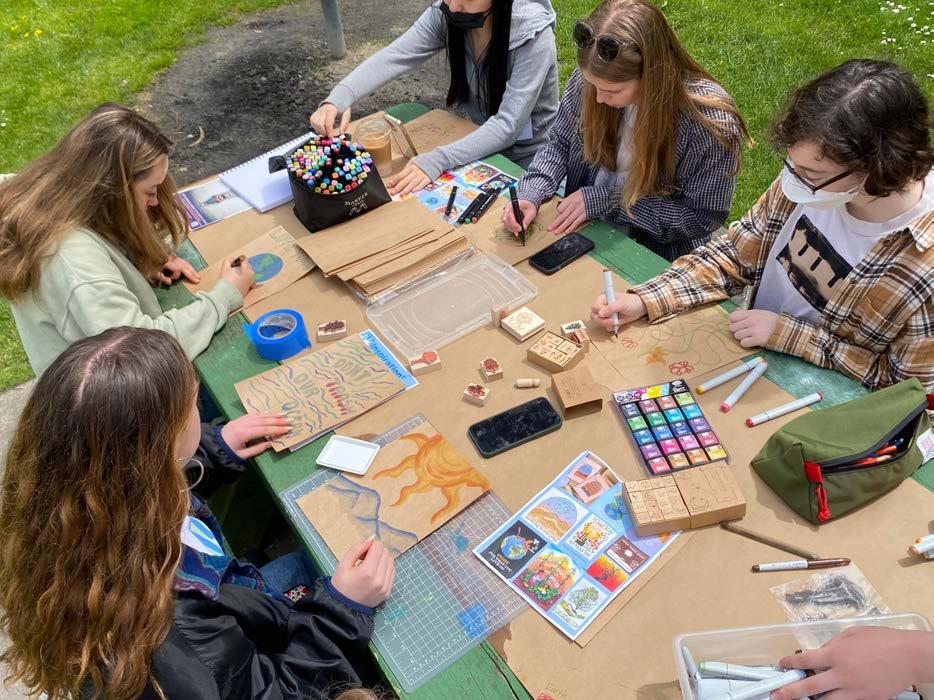
What did you learn?

climate movement, recognizing that horizontal mentorship fosters collaboration and ongoing engagement. Embracing the notion that optimism in our work as a powerful antidote to eco-paralysis. This shift in perspective enabled us to inspire positive action and resilience, ultimately contributing to the success of our environmental initiatives.”
How did you incorporate creative arts?
“Creative arts served as a dynamic tool, enabling us to establish a vibrant space for forging connections and effectively communicating the urgency of the climate crisis through unique and engaging perspectives. Our Climate Joy Festival provided a platform for climate protesters to visually express their passion, while the summit featured hands-on activities like screen printing and upcycling tossed materials into collages. These interactive experiences allowed us to channel our eco-emotions and articulate our visions for a sustainable future. By leveraging creative arts, we not only raised awareness but also sparked compelling conversations, inspiring a collective commitment to confronting the challenges of the climate crisis with a sense of shared responsibility.”

Team Upcyclers
Grace and her TeamUpcyclers team educated over 5,000 people including women, children, and internally displaced people. They taught them how to upcycle textile waste, food waste, and plastic waste into valuable items. Grace also launched three new initiatives: TeamUpcyclers Sustainable Energy Session, TeamUpcyclers Empowerment Scheme, and TeamUpcyclers Ocean Restoration Challenge.
For their work, Grace and her team were awarded several awards including fully funded trips to present their initiatives at the African Climate Summit in Kenya and COP28 in Dubai.
Fellow:GraceObiorah Country:NigeriaWhat moment stood out?
“The moment that stood out was the moment we received the funding because this was our first big grant ever. It meant the world to us as we were able to make a great impact and reach thousands of people. Our subsequent wins strongly built upon the foundation that the Bow Seat Fellowship has laid for us because without the Bow Seat Fellowship grant, we wouldn't have made a huge impact that facilitated our multiple accolades.”
What did you learn?
“I learned how to be prompt and creative as well as how to solve societal problems innovatively.”
What did you like?
“This fellowship is the best and the most accountable fellowship that I have ever taken part in. Kudos to the Bow Seat Fellowship Team for the feedback and evaluation mechanism. Honestly, it's topnotch.”


Eneigho Fanny Abirachoh saw increasing conflicts between humans and elephants in Bakingili, mainly due to encroachment into the forest from cultivation in the forested areas. To address this problem, Eneigho and her team trained 55 households on processing cassava into about five other useful food items such as garri, flour, fufu, starch, and spaghetti. They also trained the community in the production of wine, and how to use plantains to produce flour. Increasing cassava farming reduced pressure on the forests, and enhanced conservation of the elephants.
Reducing HumanElephant Conflict Through Cassava Farming
Fellow:EneighoFanny AbirachohCountry:Cameroon


What did you like?
“The Fellowship Grant Program gave me an opportunity for me as a youth to implement my innovative idea and provided mentors for its success.”
What did you learn?
“I specifically got more communication skills, and I learned to work with community members as well as how to implement a project.”
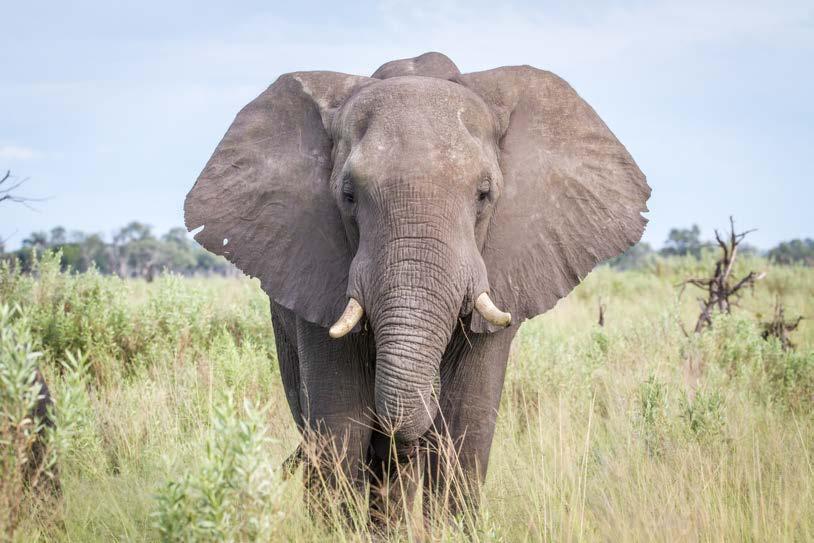
How did you incorporate creative arts?
“Creative workshops were organized where community members expressed their experiences and perspectives through various artistic mediums, such as painting and storytelling which increased awareness and understanding of the whole issue”

Youth Environmental Movement
Fellow:AshleeYin Country:Colombia

Youth Environmental Movement (YEM) is an environmental network of national and international organizations, schools, and institutions that work together to promote events and activities regarding the circular economy, conservation of biodiversity, and environmental education. Ashlee and her team successfully launched their own YEM chapter and released the first edition of Closing the Loop magazine. They gained 150+ followers on Instagram and reached over 2,000 people with their content. Ashlee and her team hosted nine leadership meetings in which environmental clubs, organizations, government representatives, and businesses attended. They also hosted a beach cleanup with five environmental school clubs, an ecomarathon with 180 runners, and the 2023 Eco Shoot photography contest.

What did you like?
“We got to learn many skills, advance greatly with our project, get financial aid to make all of the goals we set possible, and get to know other people and projects that had the same vision as us.”
What moment stood out?
“FBYC mentor meetings were always rewarding so that stood out to us. We also liked a lot of the mentions about the project through the Bow Seat newsletter!”
How did you incorporate creative arts?
“The Eco-shoot was one of our flagship events in which we used photography as a means to spread awareness of Colombia's environmental issues as well as its fauna and flora. Students, teachers, staff, and parents brought out their artistic vision and captured our country through a camera lens.”

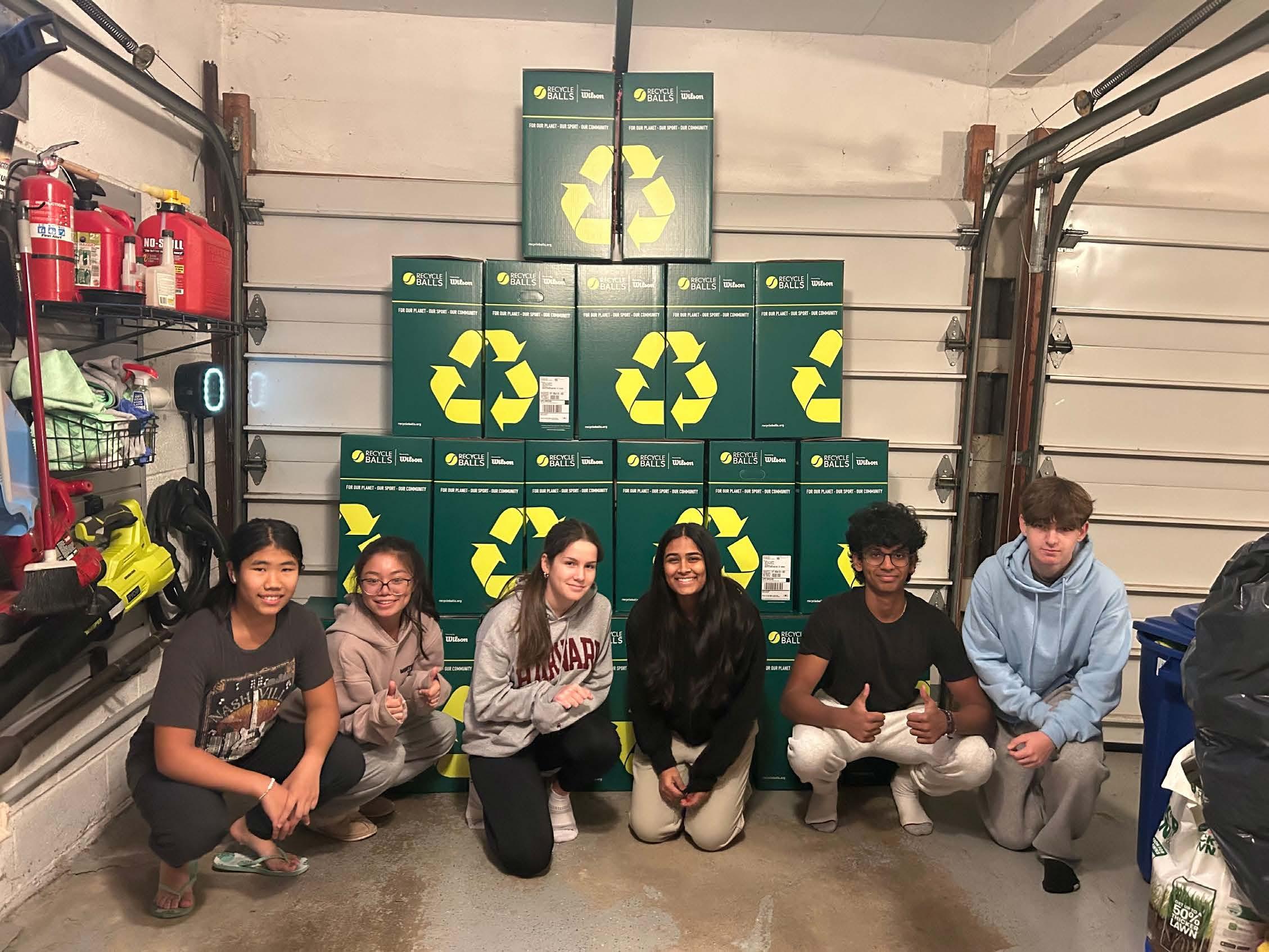
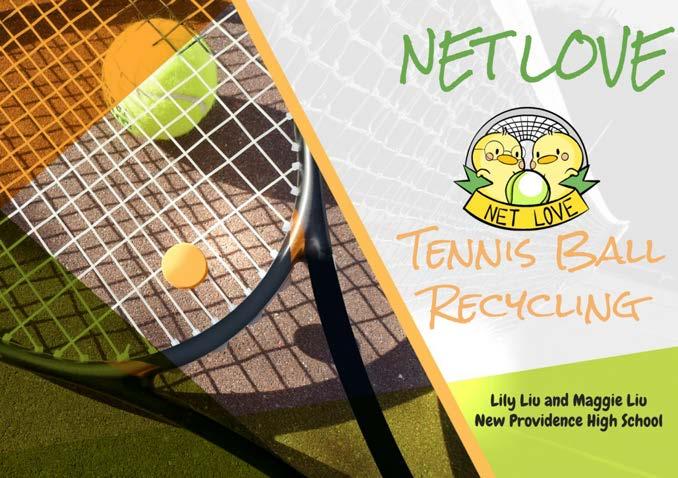
Net Love
Fellow:LilyLiuCountry:UnitedStates
Net Love collected over 48,000 used tennis balls and established three new chapters in California, Oregon and Florida. During their project, they gained over 2,600 Instagram followers, and are now developing a new initiative called “Greencycle Crafts” to create arts and crafts from used tennis balls. Through this new initiative Net Love will sell art kits that utilize used tennis balls to promote their re-use in creating Christmas ornaments, emojis, stress balls and other creative projects.


What did you learn?
What did you like?
“I appreciate having mentors who are ready to provide guidance and share ideas with me. They also provided candid feedback on my ideas and plans. We particularly appreciate the mentors who encouraged us to pursue creative art as a way to promote our business. That's why we created Greencycle Crafts (usedgoodies.com) and we need to expand it further! We are going to our local Green Fair this spring and bring Greecycle Craft everywhere to promote.”
“We learned the importance of gathering data to conduct accurate analyses. Setting goals also entails establishing achievable milestones. We learned to build social media and think of more creative ways to reuse tennis balls.”
What moment stood out?
“The diverse backgrounds of the mentors in the Fellowship program, hailing from all corners of the globe, helped me realize that people worldwide share a concern for climate change. It empowered and motivated us to continue pursuing this cause and be hopeful of a brighter future with less pollutants from used tennis balls.”
Bye Bye Plastic Bags Florida
Fellow:KarinaSamuel Country:UnitedStates


Karina and the Bye Bye Plastic Bags Florida chapter addressed plastic pollution and waste via cleanups in Bali, Indonesia and Uttar Pradesh, India. Through social media campaigns and collaborations with environmental organizations, they were able to conduct outreach and gain participants for the cleanups. They partnered with the local communities and Bye Bye Plastic Bags chapters to pool resources, knowledge, and make a substantial impact.
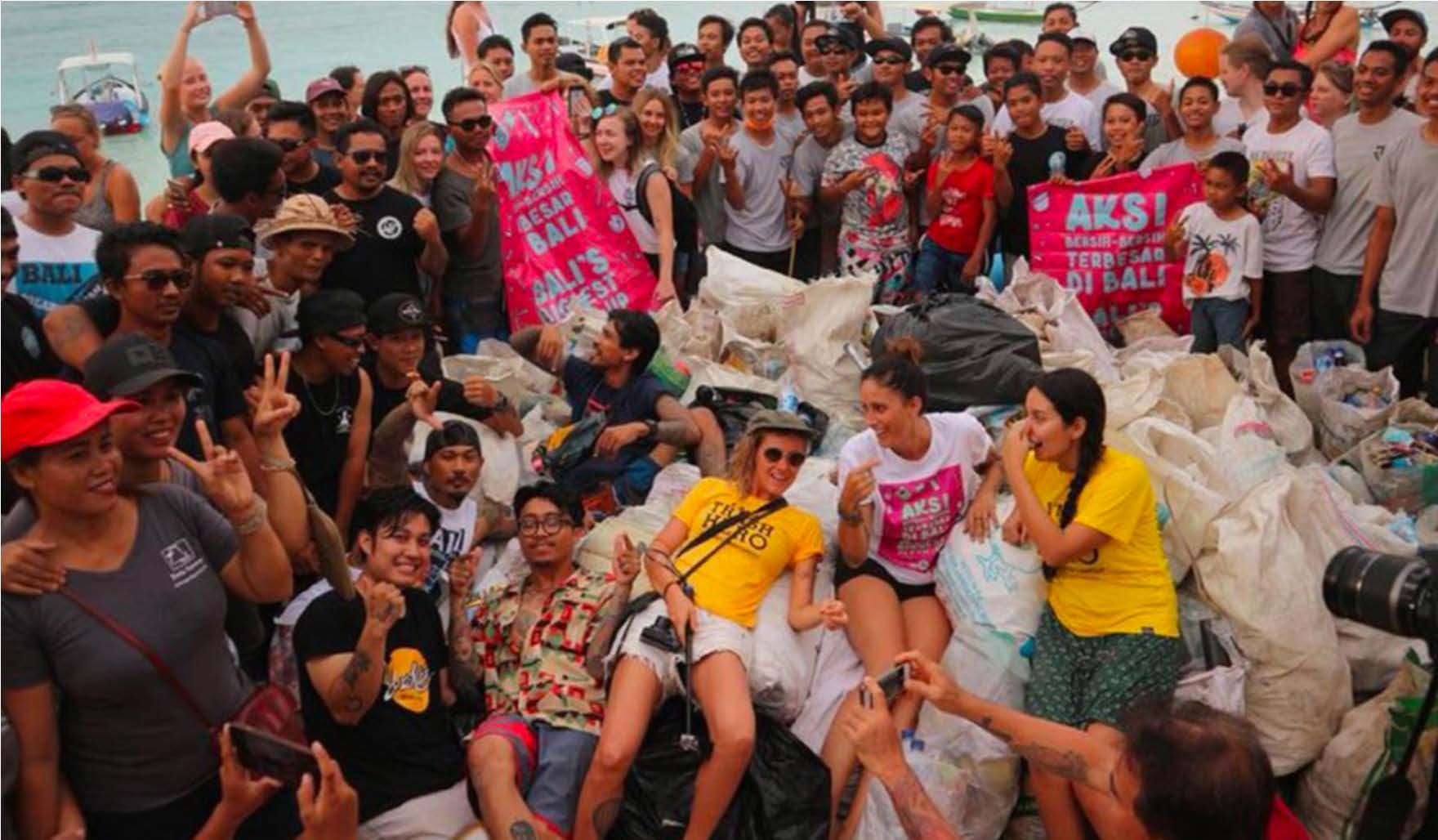
did you learn?
“Effective Communication: Dealing with language barriers taught us the importance of effective communication and cultural sensitivity when engaging with diverse communities during international cleanups.”
2. “Fundraising Strategies: We learned the value of developing innovative fundraising strategies to ensure financial support for team members and regional directors, enabling them to participate in international cleanups.”
3. “Maximizing Social Media Impact: The success of our social media campaigns highlighted the significance of leveraging the creative arts to raise awareness and engage the audience effectively.”
The Pontiac Food Forest
Fellow:MackenzieCoates
Country:UnitedStates
Food insecurity is a prevalent issue in Mackenzie, Claire, and Grace’s hometown. To address this problem, they acquired a deforested lot that they turned into the Pontiac Food Forest, a community garden that helps make fresh food available to all. The trio also incorporated a physical climate “classroom” in the garden, where the community can learn about topics like greenhouse gases, energy, resources, and pollinators. Through their project, Mackenzie, Claire, and Grace emphasized the importance of two interconnected issues: food insecurity and climate change.

The Pontiac Food Forest also collaborated with classmates, community volunteers, and experts to plant the food forest. After careful maintenance including watering, stewarding, and weeding daily, they harvested their first round of produce and delivered it to the Pontiac Salvation Army and Livingston County. They have also partnered with a local restaurant to offer a low/zero cost specialty item using food from the food forest.

Impacts
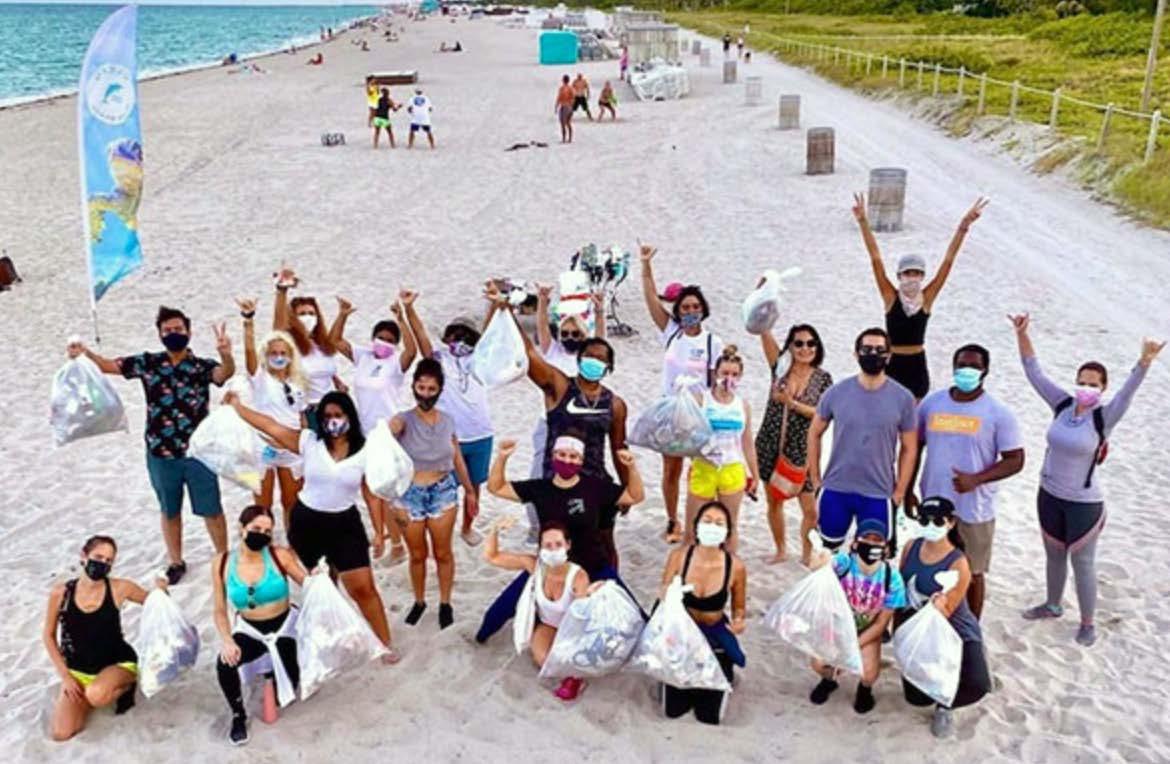
Learning about the project issue
89% said participating in the Fellowship Grant Program increased their knowledge about their project issue
Managing a project
100% said participating in the Fellowship Grant Program increased their knowledge about developing and managing a project
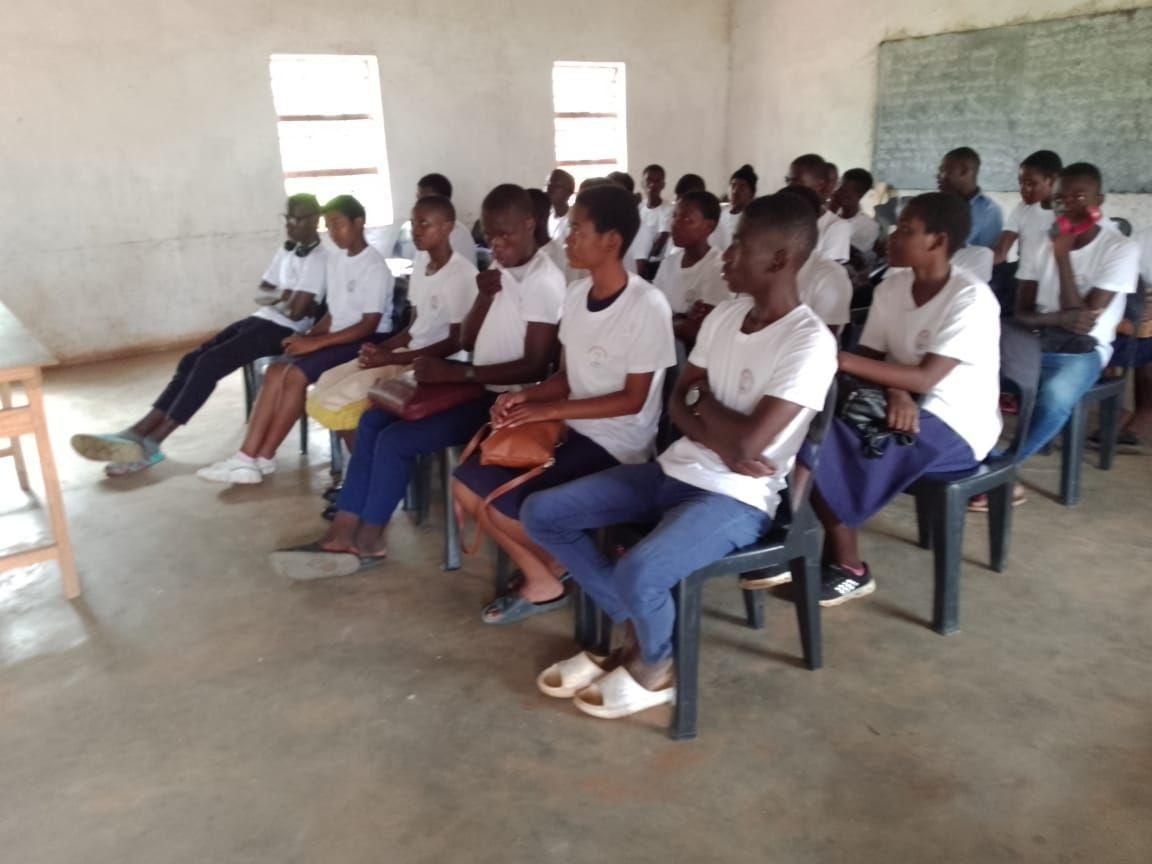
75% said they had a positive experience with their Future Blue Youth Council mentors
Future Blue Mentorship and Support
Maria Kameta, Mudzi Cooking Project
“My mentor was amazing, she was very friendly and supportive. Her support encouraged me to develop self confidence and made my work easy. Every time I needed her she was always there for me and supported my work.”
Bishal Panthi, Let's Talk About Menstruation
“The support from my Future Blue mentors has been invaluable. Whether launching innovative ideas like poster distribution in community spaces or initiating creative challenges like a case study on menstrual health hygiene in Nepalese society, their guidance has been truly commendable. Every interaction with them felt like a learning experience, from designing the curriculum for awareness sessions to providing insights on engaging more people in the crafting of sanitary napkins. Their assistance has played a pivotal role in the success and refinement of the project.”
How the creative arts helped
Keren-happuch Garba, Sinking a Borehole for the Wusasa Community
“Writing a climate-themed storybook for children was a huge step for me to take as it pushed me beyond my writer's block and writing anxiety. I was fascinated and deeply inspired by the result of collaborating with one of my mentors, Shaomin, as well as the opportunity to promote environmental conservation awareness and youth engagement. I hope to publish the storybook and to donate some to charity.”
Finn Does, Bay Area Youth Climate Summit
“The incorporation of creative arts had a tangible impact on our community by instilling a sense of hope and commitment among the youth. Through various artistic expressions at events like the Climate Joy Festival and the Summit, we witnessed a notable shift in the participants' outlook. Many youth left feeling more hopeful about the future and expressed a heightened desire to continue their environmental action”
Grace Obiorah, TeamUpcyclers
“It helped us to make a great impact as the students we taught started creating Teddie bears from textile wastes and wind vanes from plastic wastes. We paid part of the school fees for the students and gave monetary rewards to others.”
100% said incorporating creative arts into their projects helped them and their communities
 SkyChandler
SkyChandler
Worldview
78% said the Fellowship Grant Program changed how they see the world and act in it
“The Fellowship Grant Program changed my perspective on the world, showing me the significant impact simple initiatives can have when implemented collaboratively with like-minded individuals”
-Bishal Panthi, Let's Talk About Menstruation
“Participating in the Fellowship Grant program made me realize that there are many other passionate individuals who care about the environment and are dedicated to environmental conservation.”
-Lily Liu, Net Love
“The Fellowship gave me the opportunity to explore various forms of environmental art. I was also able to draw more environmental artworks and teach others how to use art as a powerful advocacy tool to achieve environmental justice.”
-Grace Obiorah, TeamUpcyclers
Mental Wellbeing
100% of Grantees felt positive emotions after participating in the Fellowship Program including "interested, inspired, passionate, hopeful, empathetic/compassionate, and empowered/motivated/determined.
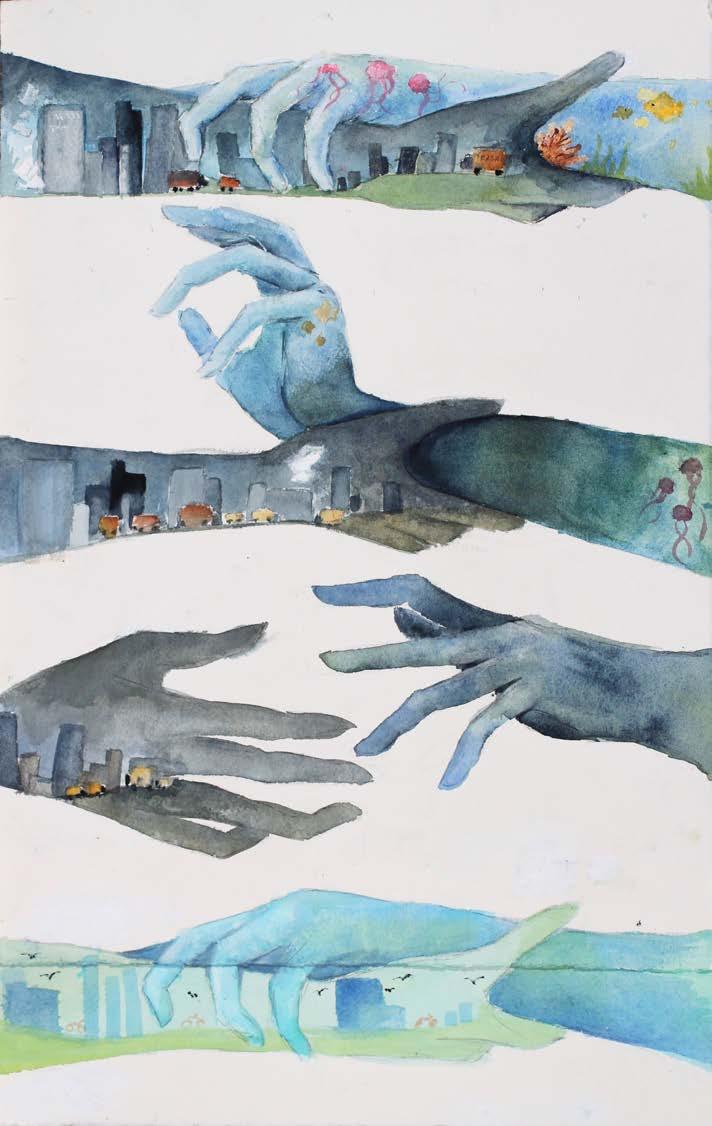
89% said that before participating in the Fellowship Program, they had moderate to a lot of stress and/or anxiety about our changing environment
56% said participating in the Fellowship Grant Program helped with their stress and/or anxiety about our changing environment
22% said participating in the Fellowship Grant Program increased their stress and/or anxiety about our changing environment
22% said participating in the Fellowship Grant Program did not change their stress and/or anxiety about our changing environment
GwenWodarkMental Wellbeing
Grace Obiorah, TeamUpcyclers
“It made me empathetic and compassionate as I was able to feel the pains of people affected by the climate crisis and offer tailored solutions. I was empowered with the funding and training to make my project a success. We were able to empower over 5,000 people thanks to the Bow Seat Fellowship Grant and the Bow Seat Fellowship Team.”
Finn Does, BAYCS
“Engaging in the Fellowship Grant Program sparked a genuine sense of interest, hope, empathy, and empowerment within me. The program allowed us to amplify our voices and agency, reinforcing the belief that, as young individuals, we can make a significant impact when in community.”
Ashlee Yin, YEM
“It made us feel like we were not alone. All the support we got made us realize that we cannot have a bigger impact through our project if we only look to work by ourselves. Having people that supported us and were looking out for us made us more confident and empowered of doing our project.”

